This article was co-authored by Jourdan Evans, DPT. Jourdan Evans is an ACE (American Council on Exercise) certified Personal Trainer based in Los Angeles, California. She received her DPT in Physical Therapy from St. Ambrose University in 2012 and received her ACE certification in 2013.
There are 9 references cited in this article, which can be found at the bottom of the page.
wikiHow marks an article as reader-approved once it receives enough positive feedback. In this case, 92% of readers who voted found the article helpful, earning it our reader-approved status.
This article has been viewed 58,708 times.
Lower back pain is a serious issue in the United States. It's estimated that approximately 31 million Americans experience backaches at any given time and 50% of workers admit to having significant back pain symptoms every year. There are many causes of low back pain, but the most common causes of backache include poor posture, improper lifting technique, obesity, sedentary lifestyle, and mild trauma from athletic activities. For low back pain, there are a variety of effective treatment options, although using an exercise ball at home is probably the most economically friendly. An exercise ball (also called stability ball or core ball) is a great tool to address lower back pain, weakness and inflexibility.
Steps
Doing Strengthening Exercises
-
1Start with back extensions. Doing back extensions while leaning face-down on an exercise ball targets the thick paraspinal muscles of your low back while simultaneously giving a little stretch to your abdominal muscles in the front of your torso. In a way, it's like doing a "reverse sit-up." Weak and strained paraspinal muscles are a common cause of low back pain, so strengthening them on an exercise ball makes sense.[1] Do 3 sets of 10 repetitions with 1 minute rest in between, assuming that you don't feel sharp pain when you extend your spine — if you do feel pain, then see a healthcare professional first.
- Lay with your stomach on the exercise ball with your legs outstretched, using your feet/toes for stability (wearing rubber-soled shoes is a good idea). You can also try placing your feet along the bottom of a wall.
- Then place your hands behind your head and slowly lift your upper abdominals and chest off the ball, arching your back in the process. Try to focus on contracting the muscles of your low back. Hold for a few seconds while in an extended position and then slowly lower your torso back down to the ball.
- Try squeezing your shoulder blades together to engage your upper back muscles.
-
2Do some spinal rotations. Rotating your spine from side-to-side works out not only the paraspinal muscles right next to your spine, but also other core muscle groups such as the lateral obliques, abdominals and muscles of the pelvis. Having a strong core that works in harmony dramatically reduces the risk of back injuries and pain.[2] If you feel sharp pain when rotating from side-to-side, then see a healthcare professional (such as a chiropractor or osteopath) first because there may be an issue in your spinal joints. Making sure your core muscle groups are relatively strong before you start rotating is a good strategy to reduce the risk of back pain. Spine rotations are another great exercise for strengthening the lower back and preventing pain, because they also simultaneously stretch the muscles of the back and core. You can repeat the exercise five times on each side, two to three times per day.
- While sitting upright on the exercise ball, raise your arms above your head (or you can place your hands on your hips), making sure that your feet are firmly on the floor for stabilization.
- Then, with your feet planted, rotate as far as you can in one direction (as if you're shoulder checking), holding for a few seconds at the end of the range. Contract the muscles in your core while you hold. Then slowly rotate back to the neutral position for a second before rotating in the opposite direction. Aim for about 10 rotations in both directions on a daily basis.
- The low back, or lumbar region, is more susceptible to injury and pain because it supports the weight of the upper body.
Advertisement -
3Add some pelvic isolations while sitting. Low back pain is sometimes caused by weak muscles in surrounding areas which forces the low back to over-compensate or overwork, resulting in injury. Your pelvic muscles are part of your core group and sometimes weakness there is responsible for low back pain.[3] As such, strengthening your pelvic muscles is a good strategy to deal with (or help prevent) low back issues.
- With your arms by your sides or on your hips, sit on the exercise ball with your feet planted firmly on the floor. Then, gently tilt your pelvis, pulling the stomach muscles in and moving the hips forwards and upward, as if moving your hip points upward, in order to flatten the small of the back. Hold for a few seconds and then return to the starting position.
- Next, slightly arch your low back, pulling the hips backwards. Hold this position for a few seconds, then return to the starting position. This exercise can be done back and forth 10 times continuously on a daily basis.
- Alternatively, while in the same position, do slow circular rotations in one direction (clockwise) for a few minutes, then switch to the opposite direction (counterclockwise). This movement is very similar to keeping a hula hoop rotating around your hips.
-
4Perform a bridge-like exercise. Using an exercise ball to form a "bridge" with your body is excellent for building strength in virtually all core muscle groups, including the low back, pelvis, and abdominals.[4] Keep in mind that any exercise that utilizes the abdominal and back muscles in coordinated fashion is a good core exercise. Bridge-like exercises can be done on the floor without an exercise ball, but using one creates more instability (movement) that forces your muscles to automatically compensate for in order to maintain balance. In short, using an exercise ball makes the exercise more challenging.
- Lie down on your back with your legs straight. Lift your legs and rest your calf muscles on top of the exercise ball. Keep your arms by your side with the palms of your hands flat on the floor.
- Then, place the bottom of your feet on the ball and push your butt/pelvis off the floor. The key is to keep your torso and spine as straight as you can (which looks like a bridge). Hold the position for 10–30 seconds, then return to the relaxed position for a few seconds before repeating. Repeat the exercise five to ten times on a daily basis.
- For a more advance version, put one foot flat on the ball while straightening your other leg about six to 10 inches in the air. Keep your leg straight as you lift your butt off the ground, hold for 10–30 seconds then lower and repeat with the opposite leg.
Stretching on the Ball
-
1Do a lower back stretch. Using an exercise ball for stretching muscles and mobilizing the spine is effective, fairly safe, and even fun. The stability ball effectively stretches the lower back by providing a broader stretching area and greater freedom of movement. Laying with your back extended over an exercise ball doesn't really stretch the low back muscles (although laying over it on your stomach does), but it does traction or stretch your spine, which can also help to alleviate lower back pain. On the other hand, extending your back over the ball does stretch your abdominals and some pelvic muscles.
- Start by sitting on the exercise ball and then walk your feet to maneuver yourself such that the ball is under your lower back area. Let your arms fall away to your sides and slowly start to extend your back and head over the ball, using your feet for stability.
- Go as far as you can go without pain and see if you can touch the floor with your outstretched arms, which provides a good stretch for your upper back, chest, and shoulders. Hold this position for 30 seconds and aim for five to 10 times on a daily basis. Remember to breathe in and out deeply while stretching.
- As an alternative to the exercise ball, a great activity that stretches the back and other core muscles is yoga. The challenging body poses of yoga also act to strengthen your core and leg muscles and improve your overall posture.
-
2Switch positions and lay on your stomach. Switching positions on the exercise ball and laying on your stomach will tend to stretch your low back and mid-back muscles better. To get the best back stretch, you may want to switch to a bigger ball so that you have more height to let your body bend over without bumping into the floor.
- Start by positioning your chest and stomach on top of the ball, using your feet for stability and guidance. Once balanced on top of the ball, extend your arms above your head and try to touch the floor. At the same time, extend your legs and allow your torso to sort of wrap over the ball.
- Go as far as you can go without pain and hold this position for 30 seconds. Aim to do this five to 10 times on a daily basis. Remember to breathe in and out deeply while stretching.
-
3Try a "lat" stretch. The latissimus dorsi (or lat, for short) is one of the largest muscles in the body. It spans the entire upper back (including a portion of the upper arms) and extends down to the lower back.[5] This muscle is certainly a contributor to back pain and should be addressed during your ball exercise routine
- Kneel on a mat with the exercise ball in front of you. Place your palms on top of the ball and move the ball as far away from your body as you can by leaning forward with your hips and “walking” it away with your hands.
- Stop when you feel a stretch near the armpits and sides of the torso. The lower back will also be stretched in this position. Bring your chest down to the floor as far as the stretch allows you to. Hold for 30–60 seconds and aim for five to 10 repetitions daily.
Seeking Professional Assistance
-
1See a physiotherapist. If your low back problem is recurring (chronic) and caused by weak spinal muscles, poor posture or degenerative conditions such as osteoarthritis, then you should consider seeking professional help for figuring out a rehabilitation program. A physiotherapist can show you specific and tailored stretches and strengthening exercises (utilizing an exercise ball) for your back issue.[6] Most physiotherapists offices have a wide variety of exercise balls to choose from and other equipment that can help you get over you lower back pain.
- Physiotherapy is usually required two to three per week for four to eight weeks to positively impact chronic back problems.
- If need be, a physiotherapist can treat your sore back muscles with electrotherapy such as therapeutic ultrasound or electronic muscle stimulation.
-
2Schedule an appointment with a chiropractor or osteopath. Chiropractors and osteopaths are spinal specialists who focus on establishing normal motion and function of the small spinal joints that connect the vertebrae, called spinal facet joints. Treating the joints of your low back may be necessary before you start to use an exercise ball at home. Manual joint manipulation, also called an adjustment, can be used to unjam or reposition low back joints that are slightly misaligned, which triggers inflammation and sharp pain — particularly with movement.
- Although a single spinal adjustment can sometimes completely relieve your back pain, more than likely it will take three to five treatments to notice significant results. Keep in mind that your health insurance may not cover chiropractic care.
- Many chiropractors use exercise balls in their offices for spinal strengthening and rehabilitation purposes, so they can often be a good source of information and advice on how to use them safely and effectively for your specific back issue.
-
3Talk with your doctor. If working out on an exercise ball for many weeks is not effective for alleviating your lower back pain, then make an appointment with your family physician in order to consider any potentially serious spinal issues such as a herniated disc, nerve entrapment, infection (osteomyelitis), osteoporosis, stress fracture, arthritis or cancer.[7] These are not common causes of low back pain, but mechanical causes (such as sprains, strains and slightly jammed joints) usually get resolved within a few weeks or so.
- In about 1/3 of people who experience low-back pain, the pain lasts for more than 30 days if they don't do anything about it (exercises, stretches, treatments).
- X-rays, bone scans, MRI, CT scan and nerve conductance studies are tools that your doctor may use to help diagnose your lower back pain.
- Your doctor may also send you for a blood test to rule out arthritis or a spinal infection such as meningitis.
- Your doctor may refer you to medical specialists such as an orthopedist, neurologist or rheumatologist in order to better figure out your back condition.
Sample Exercises
Warning
- Signs and symptoms of serious low back pain that should cause you to immediately seek medical attention include: muscle weakness and/or loss of sensations in your arms or legs, loss of bladder or bowel control, high fever, sudden weight loss.[9]
References
- ↑ http://www.medicinenet.com/low_back_pain/page5.htm
- ↑ https://www.skimble.com/exercises/1544-torso-rotations-on-stability-ball-how-to-do-exercise
- ↑ https://www.nhs.uk/common-health-questions/womens-health/what-are-pelvic-floor-exercises/
- ↑ https://www.popsugar.com/fitness/photo-gallery/40284922/image/40285963/Straight-Leg-Bridge-Stability-Ball
- ↑ http://www.physioadvisor.com.au/14419350/latissimus-dorsi-stretches-lat-dorsi-stretches-.htm
- ↑ http://www.spine-health.com/treatment/physical-therapy/physical-therapy-benefits-back-pain
- ↑ https://my.clevelandclinic.org/health/diseases/7936-lower-back-pain
- ↑ http://www.orthop.washington.edu/?q=patient-care/articles/arthritis/back-pain.html
- ↑ https://www.versusarthritis.org/about-arthritis/conditions/back-pain/
About This Article
To use an exercise ball to help with lower back pain, try laying with your back extended over the ball to stretch out the muscles in your lower back. Perform this stretch for 30 seconds a time, 5 to 10 times per day. You can also try switching positions and laying on your stomach to further stretch your back muscles. Additionally, sit on the ball while rotating your spine from side to side to strengthen your lower back, as well as your core, obliques, and pelvis, all of which help support your back. To learn how to perform a bridge exercise on your ball to strengthen your back and core, keep reading!
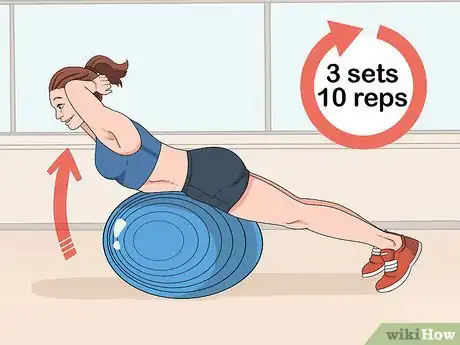

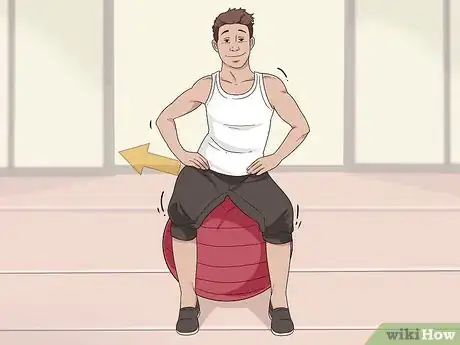


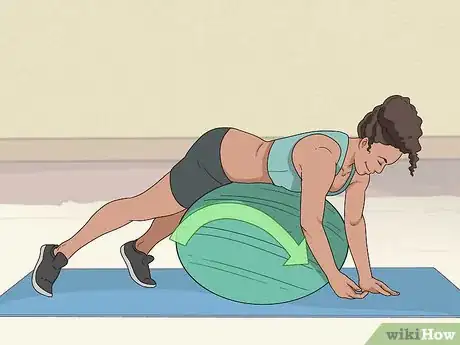

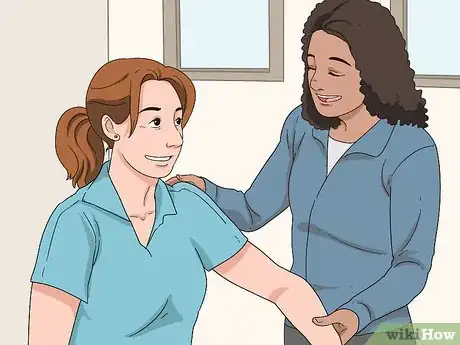
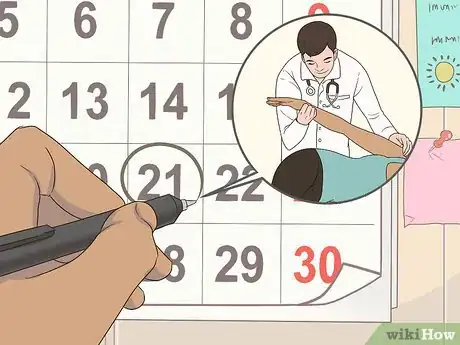
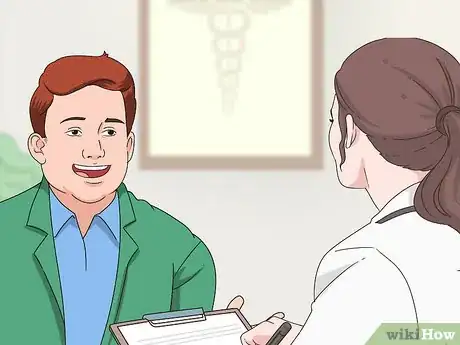
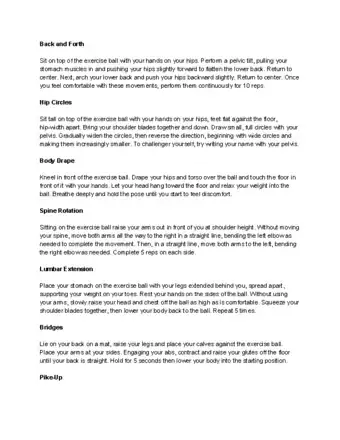

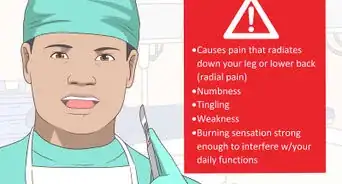
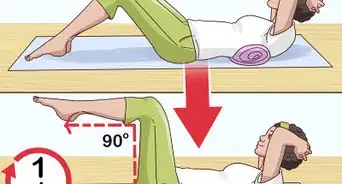
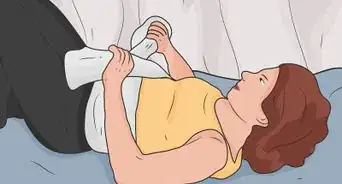
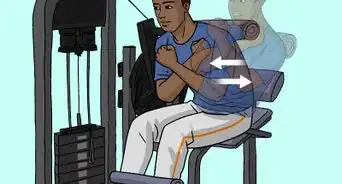

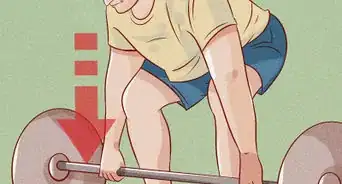
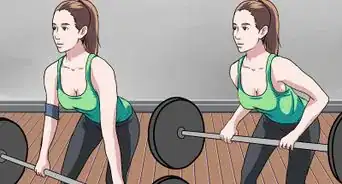
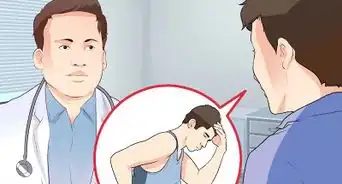









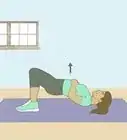
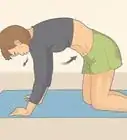
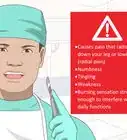
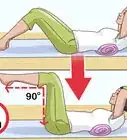



































Medical Disclaimer
The content of this article is not intended to be a substitute for professional medical advice, examination, diagnosis, or treatment. You should always contact your doctor or other qualified healthcare professional before starting, changing, or stopping any kind of health treatment.
Read More...